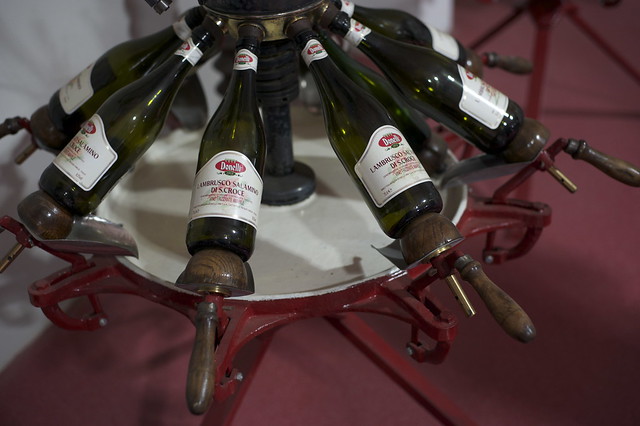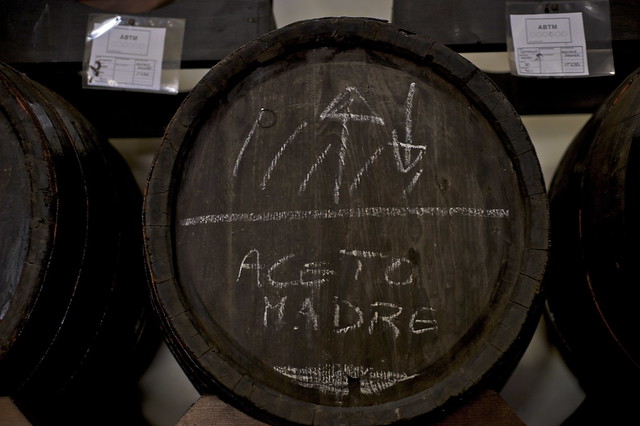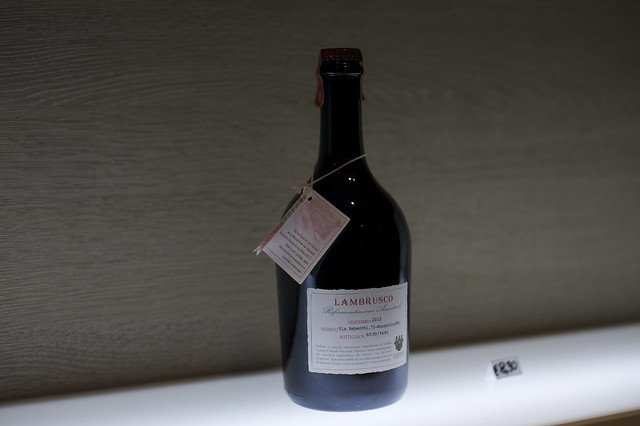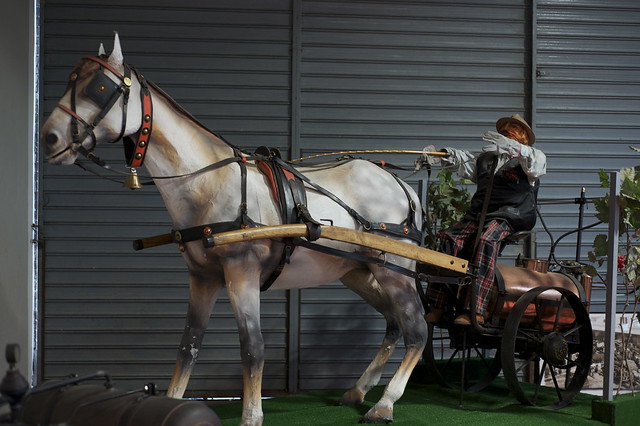From the heights of the snowcapped Dolomites to the verdant Valle del Cibo, I recently had the delicious pleasure of visiting a number of the finest food and drink producers in northern Italy, taking in lots of pretty countryside along the way and getting to known some of the friendliest people I’ve ever met.
During my day in Modena, I made a postprandial excursion to the nearby village of Nonantola (still within the provincial boundaries of Modena) where I visited a balsamic producer and a winery. Finding out what makes aceto balsamico tradizionale such a prized delicacy and why local quaff Lambrusco is a lot better than many wine snobs seem willing to realise added up to a wonderful way to spent an afternoon.
Acetaia Pedroni
Okay. First of all allow me to distinguish between the rare and dearly priced aceto balsamico tradizionale from the ubiquitous and priced for all budgets balsamic vinegar. Both are tasty treats. However the latter is really just a handy go-to ingredient for sprucing up a wide variety of dishes whereas the former is a luxury to be savoured in small doses and only when you really want to wow the palate.
The “tradizionale” stuff dates back before Roman times. Originally used for medicinal purposes, it’s a bit of a misnomer to even call it vinegar. To be officially recognised as the real deal DOP product, it needs to have been made from cooked musts of traditional Modena grape varieties (Trebbiano’s the main one); to have been cooked in open vats with natural fermentation and acetification occurring; and to have been aged in wood barrels for at least 12 years. For it then to be certified as Extravecchio it needs to aged for at least 25 years.
Acetaia Pedroni is a relative newcomer to the balsamico scene. The family’s only been making it since the 1860s. Cooking the musts of only Trebbiano grapes and then applying a maturation process that goes from mulberry barrels to chestnut, cherry, juniper and then oak, Pedroni produces five balsamics ranging in price from €50 for its youngest “Italo” bottle to €250 for its oldest “Cesare” bottle of 60 year old Extravecchio. I had a teensy sample of the complete range. Each one a more overwhelming profusion of flavour than the gorgeous one before it. The Cesare had me lightly pound my fist, furrow my brow and gasp in disbelief.
Pedroni brand or not if it’s aceto balsamico tradizionale, it must be sold in a small bulbous 100ml bottle with stem and be labelled at “tradizionale di Modena”. Otherwise, what you’re looking at buying might be nice and even good value, but it won’t be aceto balsamico tradizionale.
Pedroni is also home to a popular osteria with cellar tours included with wines, but reservations are required. There’s a shop onsite selling not just the family’s exceptional range of aceto balsamico tradizionale but also their own non-tradizionale vinegars and local wines.
Visit Acetaia Pedroni online at acetaiapedroni.it.
Gavioli Winery
Balsamic may be lauded the world over as an undisputed gastronomic delight, but another local fermented grape product, Lambrusco wine, has been all but globally lampooned across the planet as little more than a cheap joke. I reckon the wine is getting a bad wrap. As a rare sparkling red wine, it’s at the very least an intriguing one to sip. And as is usually the case with Italian wines, Lambrusco pairs well with food – particularly food from its same general region. A plate of prosciutto with some Parmeggiano Reggiano and a glass of Lambrusco is a treat I find hard to pass up. And a nice thing about Lambrusco’s poor standing is that those of us who enjoy drinking it can do so at a fraction of the cost that more appreciated wines command.

Just down the road from Pedroni is Gavioli Cantinieri, where Lambrusco and other wines have been produced since 1794. I had a tour and a tasting here … and ended up leaving with a couple of exceptionally valued bottles. One which I’m really looking forward to opening is a newly launched product made in an ancient method – Lambrusco Ancestrale, made of Sorbara grapes and fermented in the bottle. I’ll let ya know how it goes with a follow up review.
Whether you’re willing to give Lambrusco a chance or not, Gavioli is worth stopping by. In addition to barrelhouse tours, there’s a museum with all sorts of antiquated contraptions, tools and artefacts related to wine production and consumption … as well as a collection of vintage cars including a few especially sleek and ogle-worthy models manufactured in Modena. I found it a charming and neato little place to snoop around.
Find out more at gaviolivini.com.
For more about the region of Emilia-Romagna visit emiliaromagnaturismo.it.
I would like to thank the fine folks at boutique digital agency, The 7th Chamber, for helping sponsor this trip.


























Pingback: Nonantola sul blog turistico inglese “tikichris” | Visit Nonantola
Pingback: Blog Travel Emilia romagna | Christmas tasty tales